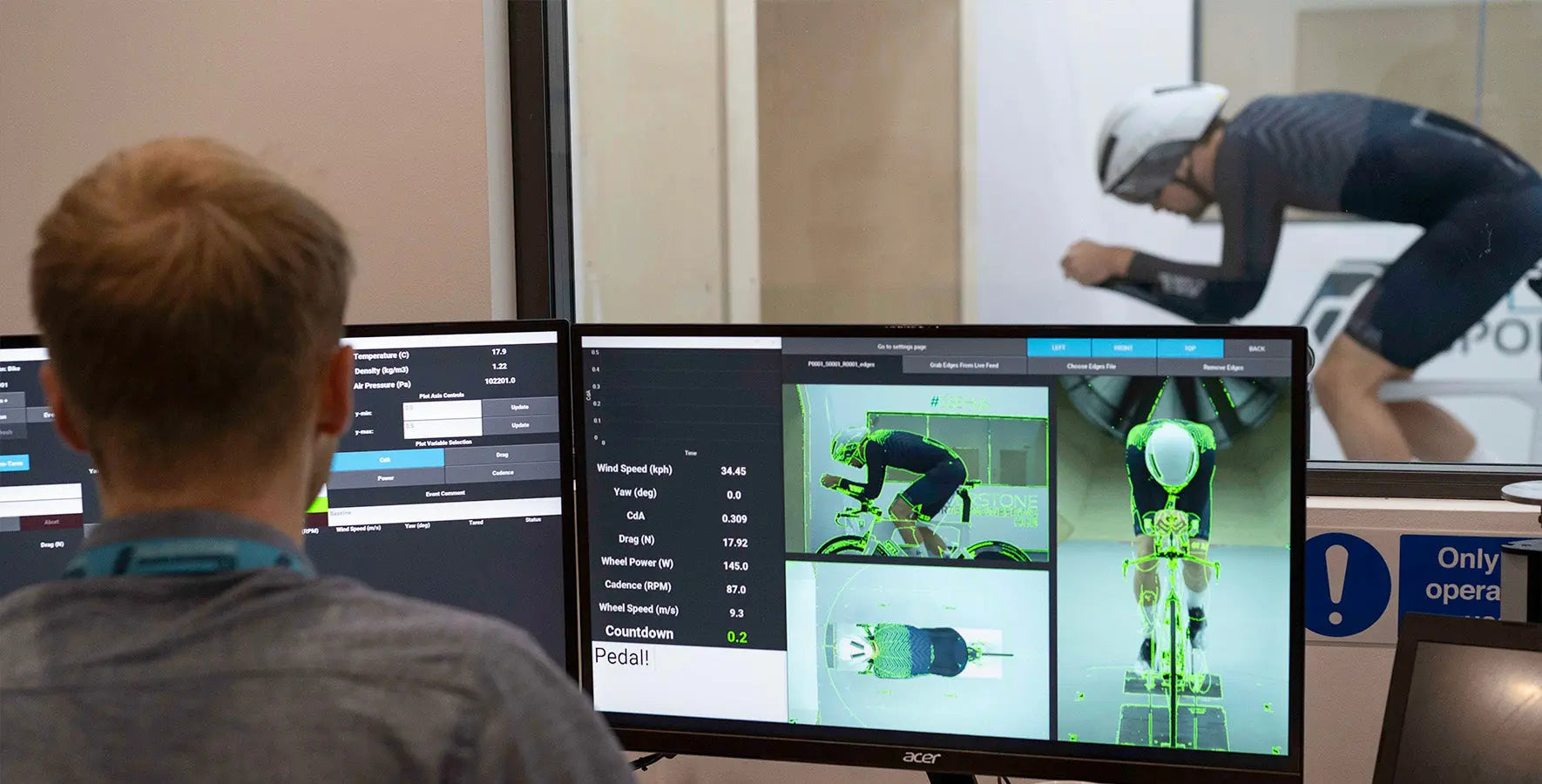Aero overshoes or aero socks? What's the difference between them and is it worth getting overshoes is you already have aero socks.
To clear up this question we've tested the options so you know whats best for you.

Rule 28 UCI Overshoes in testing
Protocol
Three tests were conducted at Silverstone Sports Engineering Hub on an elite rider in a TT position. Rider position, system weight, cadence and all other equipment were kept constant between tests.
Test runs of 30 seconds were conducted at 40-60kph in increments of 5kph
Three different options were tested:
- Rule 28 Aero socks with uncovered shoes
- Rule 28 Aero socks with covered shoes
- Rule 28 UCI Overshoes with no socks
Shoes used were Fizik Tempo R5 Powerstrap
Results in Watts
| Speed | |||||
| Test Option | 40 kph | 45 kph | 50 kph | 55 kph | 60 kph |
| Rule 28 Aero socks with uncovered shoes | 194.7 | 272.3 | 371.6 | 494.4 | 637.4 |
| Rule 28 Aero socks with covered shoes | 188.7 | 268.7 | 367.0 | 487.8 | 633.1 |
| Rule 28 UCI Overshoes with no socks | 187.3 | 266.3 | 362.7 | 482.4 | 626.5 |
Saving vs. Aero Socks with uncovered shoes
| Speed | |||||
| Test Option | 40 kph | 45 kph | 50 kph | 55 kph | 60 kph |
| Rule 28 Aero socks with covered shoes | 6 | 3.6 | 4.6 | 6.6 | 4.3 |
| Rule 28 UCI Overshoes with no socks | 7.4 | 6 | 8.9 | 12 | 10.9 |
Findings
Smoothing the profile of your shoe can lead to significant reductions in drag even on a relatively clean shoe such as the Fizik Tempo R5 Powerstrap which uses straps that have a much lower cross sectional area than shoes utilising dial closure systems.
A shoe cover that only covers the shoe and not the leg provided savings of between 3.6W at 45kph (lowest saving when compared to just using aero socks) to 6.6W at 55kph (highest saving when compared to just using aero socks). This is a significant improvement but the savings offered by out UCI overshoes are significantly higher.
Our UCI overshoes provided a saving of between 6.0W at 45kph (lowest saving when compared to just using aero socks) to 12.0W at 55kph (highest saving when compared to just using aero socks). The extra savings provided by our overshoes can be attributed to material and design differences.
We have made significant investments into the materials we use. The fabrics used in our overshoes are best in class offering excellent drag reduction. Secondly, the fit and features of our overshoes also work to reduce drag. All overshoes smooth out the transition between shoe and leg but our overshoes enclose the heel cup reducing drag generated by the heel of the shoe as well as an improved, low profile toe box.
Conclusions
If out and out speed is your aim, then Rule 28 UCI Overshoes are for you. There is a time and a place for aero socks instead of overshoes however. The shoe cover sections of our overshoes is not breathable; if you are riding in hot conditions or may need to adjust the fit of your shoes, then overshoes will be hot/sweaty and prevent shoe adjustment.
Enclosing the heel cup offers excellent aero savings but means that walking in overshoes should be kept to an absolute minimum and never on rough surfaces to avoid damaging them.




